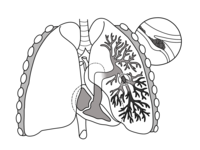
Photo from wikipedia
AIM To synthesise published literature exploring online venous thromboembolism (VTE) prevention education programmes to identify, test and refine a program theory supporting translation of knowledge into practice for registered nurses.… Click to show full abstract
AIM To synthesise published literature exploring online venous thromboembolism (VTE) prevention education programmes to identify, test and refine a program theory supporting translation of knowledge into practice for registered nurses. BACKGROUND Venous thromboembolism is a leading cause of preventable morbidity and mortality in hospitalised patients. Successful implementation of prevention strategies can be impeded by a lack of education and translation of knowledge to practice. Continuing professional development programs using e-learning platforms are increasingly common, however, there is little published literature exploring effective translation of such education to practice. DESIGN Realist Review. METHODS Searches were conducted in seven healthcare databases prior to July 2020 and updated in March 2022. Synthesis was informed by the unified theory of acceptance and use of technology (UTAUT) model and followed stages of a realist review outlined by Pawson et al. The results were reported according to the RAMESES publication standards. RESULTS Eight context-mechanism-outcome combinations were identified to explain engagement, completion and adoption of VTE e-learning into practice. Mechanisms included valuing content as relevant to practice, having confidence in the ability to use the technology and empowerment to enact change based on learning. Contextual factors that may constrain the completion of learning include the support of managers and organisations through time, and the availability of resources. CONCLUSION Translation of e-learning is critical to ensure clinical excellence. This realist review demonstrated the varying mechanisms contributing to engagement, completion and adoption of learning. These illustrate the complex nature of education for professional development. It demonstrates that the UTAUT model is suitable for guiding the design, implementation and adoption of e-learning programmes. RELEVANCE TO CLINICAL PRACTICE This review used a common clinical practice (VTE) to provide a program theory that can guide clinical educators to understand mechanisms which can facilitate engagement with, completion and adoption of e-learning into practice by nurses. NO PATIENT OR PUBLIC CONTRIBUTION The focus of this realist review was on e-learning for registered nurses. As such, no patient or public contribution was sought or given in the development, progress and writing of the submitted manuscript.
Journal Title: Journal of clinical nursing
Year Published: 2022
Link to full text (if available)
Share on Social Media: Sign Up to like & get
recommendations!